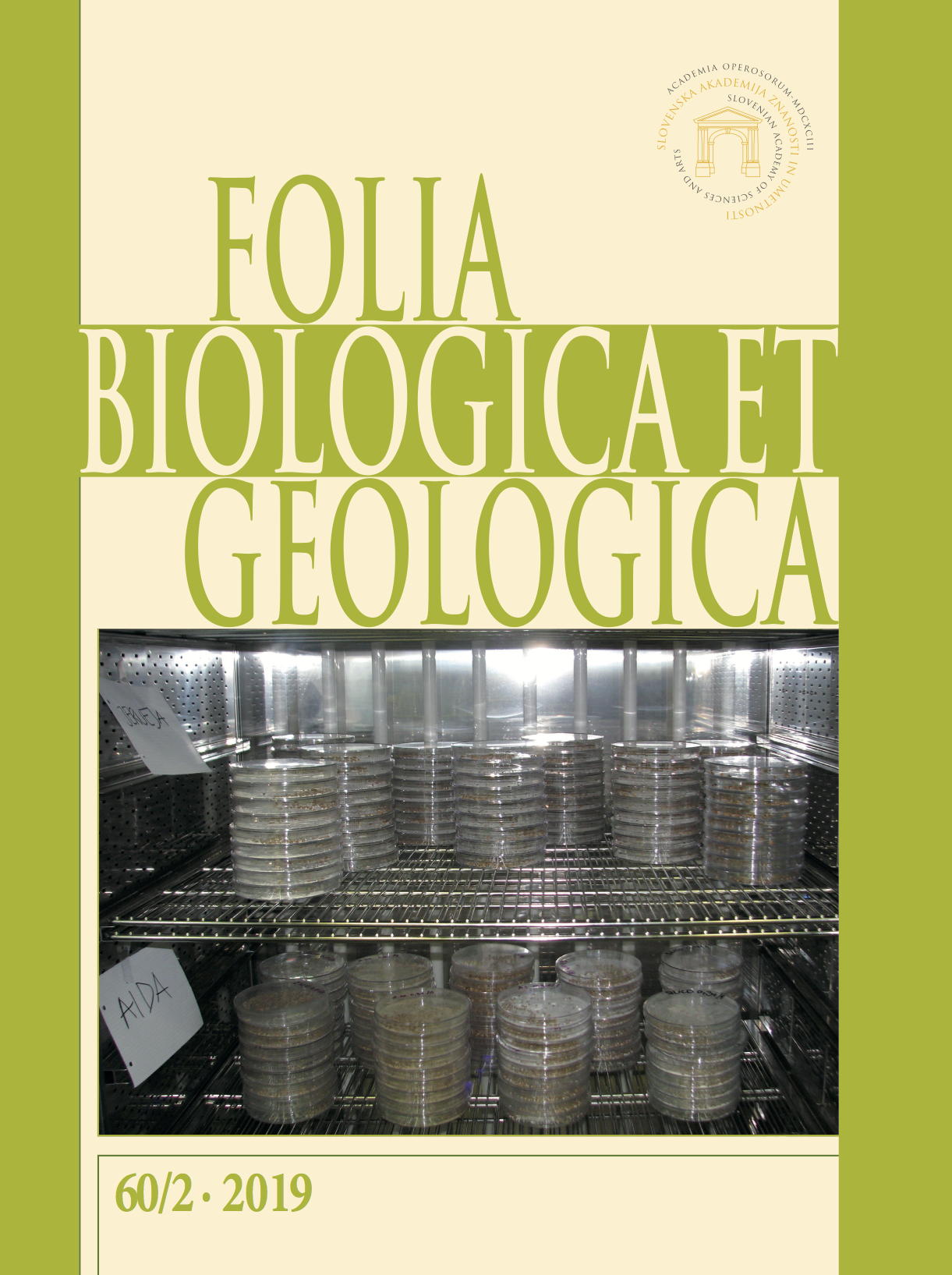Značilnosti lesnih in floemskih prirastkov pri trepetliki (Populus tremula L.) / Characteristics of wood and phloem increments in Eurasian aspen (Populus tremula L.)
DOI:
https://doi.org/10.3986/fbg0060Abstract
IZVLEČEK
Poznavanje strukture lesa in floema je ključno za razumevanje njune plastičnosti v smislu prilagoditve danim okoljskim razmeram, s čimer se zagotovi karseda optimalno delovanje drevesa. V ta namen smo raziskali značilnosti lesnih in floemskih prirastkov pri trepetliki (Populus tremula L.) v Ljubljani v rastni sezoni 2010. Analizirali smo tudi prevodne elemente v lesu (traheje) in floemu (sitaste cevi) ter razlike v dimenzijah interpretirali z vidika njihove prevajalne funkcije. Vzorce lesa in floema smo odvzeli po zaključku rastne sezone, pripravili preparate prečnih prerezov in opravili histometrične analize s pomočjo svetlobnega mikroskopa in sistema za analizo slike. Ugotovili smo, da je floemski prirastek predstavljal 11,7 % širine lesnega prirastka, rani floem pa 80,5 % širine kasnega floema. Rezultati so v skladu s predhodnimi objavami o večji intenzivnosti kambijeve celične produkcije na lesno stran v primerjavi s floemom pri zdravih drevesih, ki rastejo v ugodnih okoljskih razmerah. Traheje so bile značilno najširše v prvi tretjini branike in najmanjše v zadnji tretjini branike. Posledično so bile tudi največje površine trahej v prvi tretjini branike, medtem ko v primeru gostot trahej značilnih razlik med posameznimi tretjinami lesne branike nismo zabeležili. Povprečni premeri sitastih cevi so bili v kasnem floemu za 25,4 % manjši kot v ranem floemu, vendar razlike niso bile statistično značilne. Sitaste cevi ranega floema so bile za 28,2 % manjše od trahej na začetku rastne sezone, sitaste cevi kasnega floema pa za 35,4 % manjše od trahej nastalih na koncu rasten sezone, kar kaže na večjo transportno zmogljivost prevodnega sistema v lesu v primerjavi s floemom.
Ključne besede: branika, traheja, sitasta cev, rani floem, kasni floem, anatomija, svetlobna mikroskopija
ABSTRACT
Information on wood and phloem anatomies is crucial to understand better their plasticity in terms of adapting their structure to given environmental conditions, and by that ensuring optimal functioning of the tree. To this purpose, we investigated the characteristics of wood and phloem increments in Eurasian aspen (Populus tremula L.) in Ljubljana in the growing season of 2010. In addition, we analysed the conductive elements in the wood (vessels) and phloem (sieve tubes) and interpreted the differences in these parameters in terms of their transport functions. We collected samples of wood and phloem at the end of the growing season, prepared cross-sections and performed histometric analysis by using light microscopy and image analysis system. We found that the phloem increment represented 11.7% of the wood increment width, whereas the early phloem represented 80.5% of the late phloem width. These findings are in line with the previous publications about higher intensity of cambium production of wood cells than of phloem cells in healthy trees growing in favourable environmental conditions. The vessels were statistically the widest in the first third of the xylem increment and the smallest in the last third of the increment. Consequently, the vessels in the first third of the increment had the largest areas, while in the case of vessel density there was no significant difference among the xylem increment parts. Mean diameters of the sieve tubes in the late phloem were 25.4% smaller than in the early phloem; however, these differences were not statistically significant. Sieve tubes in the early phloem were 28.2% smaller than vessels formed at the beginning of the growing season and late phloem sieve tubes were 35.4% smaller than vessels formed at the end of the growing season, indicating higher transport capacity of the conductive system in wood compared to the phloem.
Key words: growth ring boundary, vessel, sieve tube, early phloem, late phloem, anatomy, light microscopy




